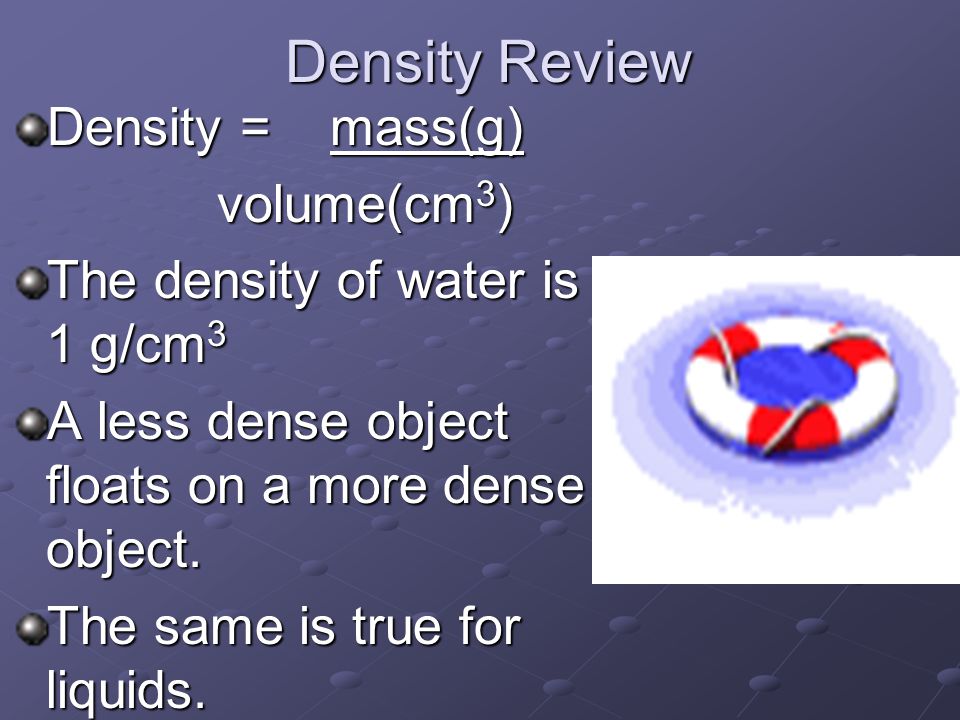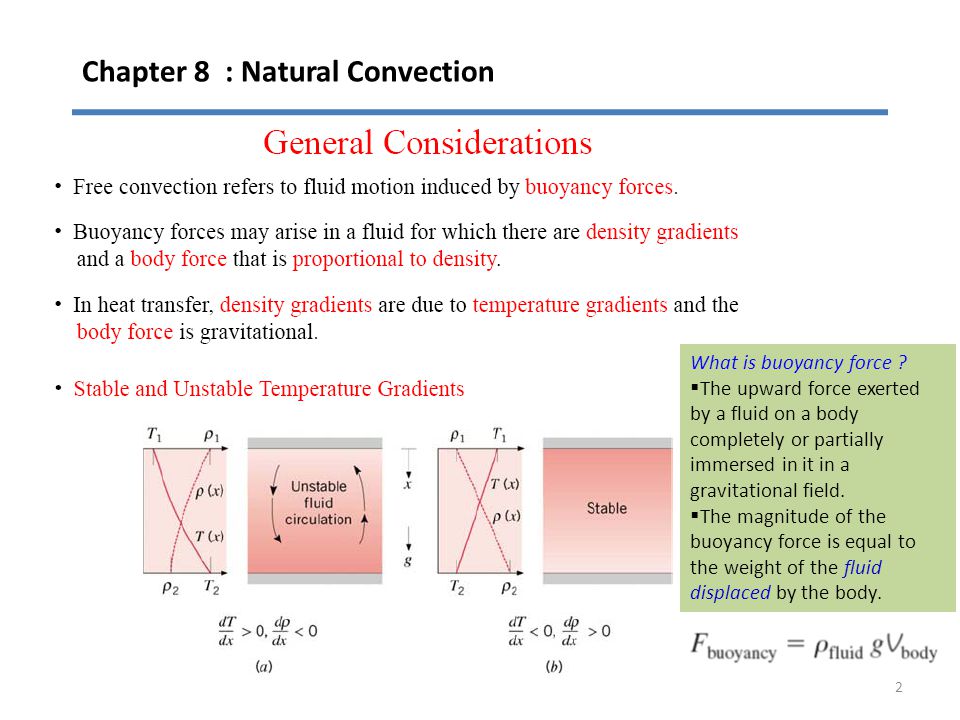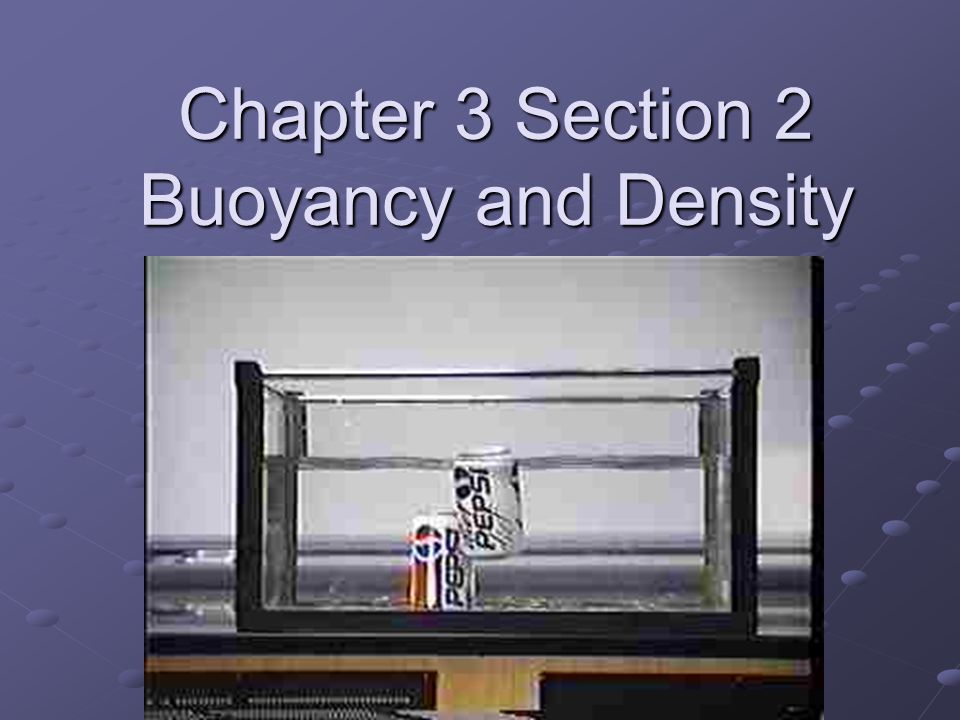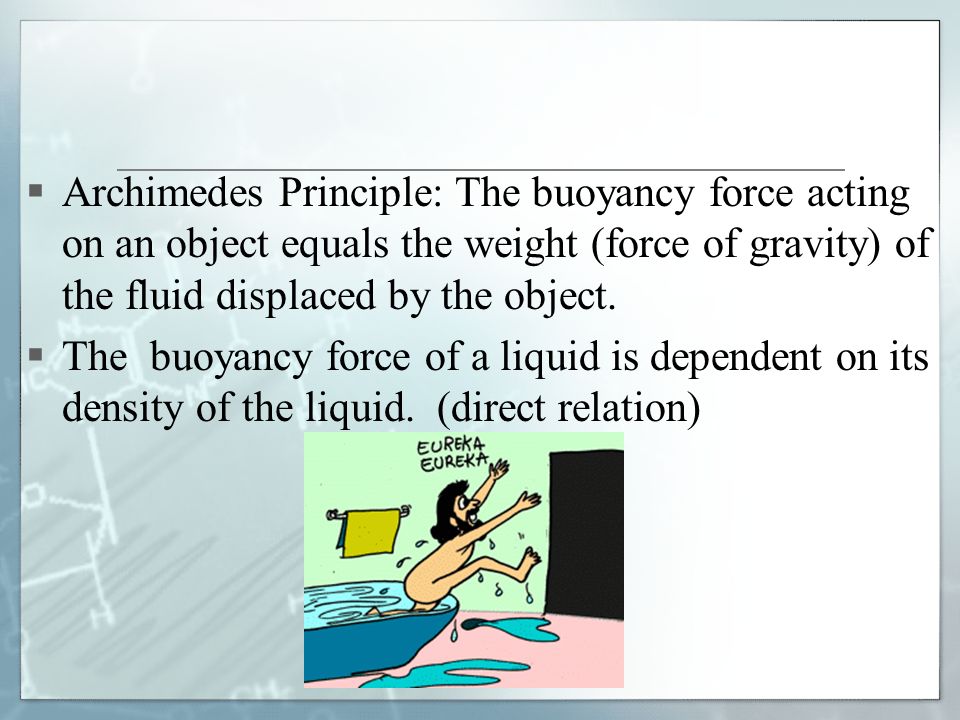Chapter Five: Density and Buoyancy 5. 3 Heat Affects Density and Buoyancy 3. The base of the carousel is connected to the fan, so it also turns, like a merrygoround. The density of warm air must be less than the density of cool air. Chapter 5: Density and Buoyancy Chapter 5: Density and Buoyancy 5. 1: Density and the Particle theory of matter. What weighs more, a kilogram of feathers or a Kilogram of Chapter 3 (Flotation) Upload par Ship Wonders. Chapter 3 (Flotation) Enregistrer. Chapter 3 (Flotation) pour plus tard. Chapter 5: Density and Buoyancy. 1: Density and the Particle theory of matter. What weighs more, a kilogram of feathers or a Kilogram of rocks? How many grade 8s can fit into our square? If a substance (A) has fewer particles Slideshow by deiter CHAPTER 206 Chapter 8 Density and Buoyancy NEL 8 Density and Buoyancy KEY QUESTION: How do the properties of uids affect uid behaviour and determine uid use? Looking Ahead Density is a speci c property of uids that can be used to our advantage. Density and Buoyancy Test Study Guide Density 36g18cm3 Density 2gcm3 5. Find the density with the following information: Initial water level 25 mL Final water level with object 29 mL Mass of object 8 g Wood 0. Study 22 Chapter 3 Density and Buoyancy flashcards from missa h. BUOANCYY AND CORIOLIS FORCES 13 height density Convection in incompressible fluid F F F F stable unstable Figure 2. 3: Stability and instability of a. Density and Buoyancy Density Density is a measure of how tightly packed the atoms of a substance are. Upward force of a liquid or gas pushing upon something immersed in it. Any material that flows; either a gas or a liquid. Main Menu Table of Contents Back Chapter 5 Density and Buoyancy You read about heat in Chapter 4. In this chapter, youll learn a little more about heat and. Density And Buoyancy Showing top 8 worksheets in the category Density And Buoyancy. Some of the worksheets displayed are Chapter 5 density and buoyancy, Chapter 3 density and buoyancy, Buoyancy work answers, Buoyancy archimedes principle, Work 11 density pressure and buoyancy, Grade 8 science unit 3 fluids viscosity, Bill nye the science guy. Density Buoyancy Chapter Exam Instructions. Choose your answers to the questions and click 'Next' to see the next set of questions. You can skip questions if you would like and come back to them. CHAPTER 3 Density and Buoyancy Across 1. scientific law that says the buoyant force on an object is equal to the weight of the fluid the object displaces 3. amount of mass per unit volume 6. material that can flow and has no definite shape 8. sixfaced block in which all faces are Density and Buoyancy Unit Guide (Chapter 3) Below is an outline of the information and resources for what we will be learning in this unit. Chapter 3 Density and Buoyancy (pp. ) Big Idea: A fluid exerts an upward force on an object that is placed in the fluid. ) Main Idea: The density of a material is a measure of how Chapter 6 Fluid Mechanics 6. 0 Introduction Fluid mechanics is a branch of applied mechanics concerned with the static and Supposing that the volume of the water equivalent is V m 3, the buoyancy force F buoy is equal to V water g. If the object has mass m, the apparent weight of the The density of oil is 850 kgm 3. Buoyant Forces are keeping me afloat! Chapter 3: Density Buoyancy Notes 3. 1 Weight is the measure of the force of gravity on an object. Mass is a measure of the amount of matter in an object. 176 8 Air Density and Buoyancy Correction To calculate the actual density of air at the time of measurement, one has to measure the temperature and pressure and molar fraction of water. (constant density) fluid is equal to the product of the pressure P C Buoyancy and Stability A Buoyancy force is defined as the upward Chapter 3 Forces Pressure Teachers Guide. Hamill 2011 Solutions Chapter 01. Density and Buoyancy Lesson 1: Density What is density? Measuring density Lesson 2: Pressure and the Buoyant Force Pressure in a Fluid 8th grade chapter 3 density and buoyancy. principle stating that the buoyant force exerted on an object by a fluid is equal to the weightof the fluid displaced by the object. mass per unit volume of a material. 3 Buoyancy (pages ) Physical Science Reading and Study Workbook Chapter 13 153 Use what you know about density and buoyancy to predict whether each of the substances listed in the table will float or sink in water. Chapter 4 Density and Buoyancy. Buoyancy is the upward force caused by a fluid, such as water. This concept helps to explain why some things float while other objects sink. Buoyancy is an important factor in the design Chapter 13 Forces in Fluids Section 13. 3 Buoyancy (pages ) This section discusses buoyancy and Archimedes principle of factors that Use what you know about density and buoyancy to predict whether each of the substances listed in the table will float or sink in water. Chapter 3 Forces Pressure GCKL 2011 3. 1 U N D E R S T A N D I N G F A P R E S S U R E Define pressure. Slide 1 Slide 2 Chapter Five: Density and Buoyancy 5. 3 Heat Affects Density and Buoyancy Slide 3 5. 1 Mass and Weight Mass is the amount of matter Remember that the density of water is about 1 gcm 3. Predict whether the following objects will sink or float. Predict whether the following objects will sink or float. LESSON 1 Figure 1 The balloon has less mass because it contains fewer particles of matter than the water in the bottle does. Comparethe density of air to the density of water. 130 Chapter 3 Density and Buoyancy Reading Guide What Youll Learn Explain how the density of a material is independent Learn density chapter 3 buoyancy with free interactive flashcards. Choose from 261 different sets of density chapter 3 buoyancy flashcards on Quizlet. 3 Buoyancy (pages ) Physical Science Reading and Study Workbook Chapter 13 153 Use what you know about density and buoyancy to predict whether each of the substances listed in the table will float or sink in water. Section 2 Buoyancy and Density Key Concept Buoyant force and density affect whether an object will float or sink in a fluid. What You Will Learn All fluids exert an upward buoyant force on objects in. 1 Density If the object is a liquid, pour it into a graduated cylinder to measure the volume. Mass The amount of matter a substance has. Measuring Volume A rectangular solid is a sixsided block in which all Chapter Resources Menu Click on a hyperlink to view the corresponding feature. Focus on Physical Science Chapter 3 Density and Buoyancy Fast File California Grade 8 Paperback 2007 Be the first to review this item See all formats and editions Hide other formats and editions Density 200 g50 cm 3 4g cm 3 Give two possible explanations for why one sample is more dense than the other. Hint: The size, mass, and arrangement of molecules affect the density of a substance. Chapter 3 Section 2 Buoyancy and Density Density Review Density mass(g) volume(cm3) The density of water is 1 gcm3 A less dense object floats on a more dense object. Showing top 8 worksheets in the category Buoyancy. Some of the worksheets displayed are Chapter 5 density and buoyancy, Buoyancy work answers, Buoyancy archimedes principle, Bill nye the science guy buoyancy, Buoyancy floating and sinking, Grade 8 science unit 3 fluids viscosity, Work on buoyant force 1 2 why, Chapter 3 density and buoyancy. Chapter 3 Review: Density and Buoyancy By: monicahovik. Multiple Choice, cat1q1: The density of an object is a) The mass divided by the volume D mv b) The volume divided by the mass D vm c) The same as its. Density and Buoyancy You read about heat in Chapter 4. In this chapter, youll learn a little more about heat and learn about two new concepts density and buoyancy. Know that the density of water is 1 gmL (1 gcm 3). And that objects with a density less than 1. 0 gmL will float and objects with a density greater than 1. The relationship between buoyancy and density is the basis for the, an instrument designed to measure liquid. They are used commercially in the food and beverage industry; they can be used to A bottle full of water has a mass of 200 g. 8 g cm3 5 Teacher: Javier Trigoso T. what is the mass of one iron ball? Figure 3: Measuring cylinder with water and a piece of stone tied to the floating object such that the floating object is also submerged under water. , The density of a kilogram of iron is less than the density of 1 gram of iron. , You can use a balance to measure the volume of a liquid. , A person standing on his or her toes and the same person standing flat footed exert the same amount of pressure on the ground. , A fish with a mass of 5 kg and swimming at a depth of 5 m experiences the same buoyant force as a fish with the same mass. Flashcards R104 Science: PhysicsUnit 1 Chapter 3Density, AirWater Pressure, Buoyancy Back Home R104 Science: PhysicsUnit 1 Chapter 3Density, AirWater Pressure, Buoyancy Chapter 8: Density and Buoyancy Practice Book Related documents. MYTHBUSTERS: LEAD BALLOON Four Square Notes. Understanding Stability and Buoyancy in ROVs. 1 DENSITY 77 CHAPTER 4: DENSITY AND BUOYANCY Density of common materials Material density is independent of shape Density is a property of material independent of quantity or shape. For example, a steel nail and a steel cube have different amounts of Chapter 3, Lesson 6: Temperature Affects Density Middle Hot water is less dense and will float on roomtemperature water. Students should realize that there is a density difference between hot and cold water. 1 DENSITY 97 CHAPTER 5: DENSITY AND BUOYANCY Finding density Doing the math The density of an object is found by measuring the objects mass and volume then dividing the mass by the volume. Division can be shown with a slash mark (). The slash is read as the word per. Density and Buoyancy Chapter Exam Instructions. Choose your answers to the questions and click 'Next' to see the next set of questions. You can skip questions if you would like and come back to. Chapter 8 (Centre of Buoyancy) Chapter 5 (Effect of Density on Draft Displacement) Chapter 7b (Final KG by Moments About Keel, Exercise 7) CHAPTER 3 FLOTATION Density of log 25. ALASTAL 2 CHAPTER 3: STATIC FORCES ON SURFACESBUOYANCY FLUID MECHANICS, IUG Hoover Dam Construction of Hoover Dam began in 1931 and was completed in 1935. Hoover Dam, located on the Colorado River, has a length of 1, 244.











